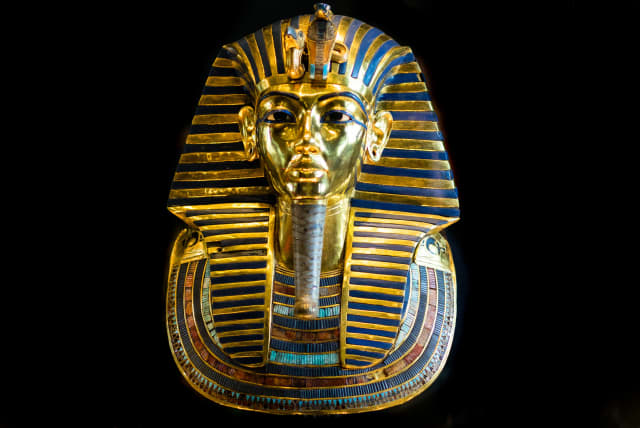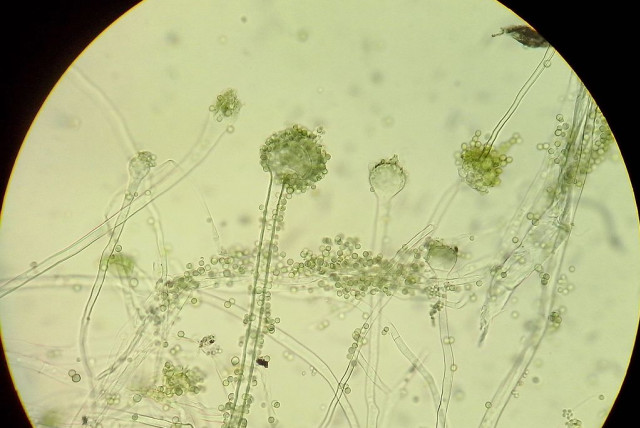Is this fungus behind the pharaoh's curse on King Tut's tomb?

Many people died after visiting King Tut's tomb in Egypt. What exactly happened, and how does it involve the Aspergillus fungus?
The tomb of the 19-year-old pharaoh who ruled ancient Egypt from 1323-1332 BCE was discovered by British archaeologist Howard Carter and has since become one of Egypt's most popular archaeological attractions.
Tourists from all over the world come to the Valley of the Kings on the Nile's west bank to see the tomb. To this day, it remains surprisingly intact, decorated with frescoes, statues and the gilded sarcophagus containing the original mummy of King Tut.
But all of this beauty is shrouded by a curse. The curse of the pharaohs.
George Herbert the 5th Earl of Carnarvon, a British nobleman who financed the search for and excavation of the tomb of Tutankhamen in the Valley of the Kings, died in April 1923, just five months after the discovery of the tomb. This sparked rumors about the "curse of the pharaohs," also known as the "mummy's curse."
The exact details surrounding his death at the age of 56 are vague, but mostly center around either pneumonia or blood poisoning.
Many say he died from something like a mosquito bite, but others suggest it could have been related to the fungi and spores found in damp and dark areas like graves. These are known as Aspergillus.
What is Aspergillus?
Aspergillus is the general name for diseases caused by the Aspergillus fungus. It's a fungal pathogen that causes aspergillosis, which sees bodily tissues, mostly the lungs, become infected with fungi.
According to the US Centers for Disease Control and Prevention, most people breathe in Aspergillus spores every day and never get sick. However, if someone is immunocompromised, it can lead to sinusitis, coughing up blood and pneumonia.
In an article published in The Lancet journal in the early 2000s, Sharif and Tariq El-Tawil suggested the theory that Carnarvon may have been infected with Aspergillus from the tomb when he died is correct. This is despite the fact that he only became sick several months after the tomb was opened.
The Tawils claimed that Aspergillus spores can stay dormant in people's lungs for extended periods of time before symptoms begin to manifest.
"it is conceivable that Lord Carnarvon was indeed symptom-free for the 5 months after his first ingress into the tomb in November, 1922," they wrote.
"On March 17, 1923, The Times of London reported that Lord Carnarvon suffered from 'pain as the inflammation affected the nasal passages and eyes.' This description is consistent with invasive aspergillus sinusitis with local extension to the orbit."
This isn't the first time fungi have been linked to the deaths from people who opened royal tombs.
An article from 2015 described the opening of the tomb of Casimir IV Andrew Jagiellon, the king of Poland, in 1973.
The king was buried in the tomb in 1492. Many of the researchers who opened the crypt in the Wawel Cathedral in Krakow ended up developing health problems and several of them later died.
Researchers investigating their deaths concluded that fungi were the cause.
To figure this out, the authors took a look at the crypt fungi ecosystem, taking samples from a cemetery and burial chapel in Poland. There, they found high concentrations of mold in the air, which provided the deadly fungi with the right temperature and humidity for them to grow.
In another article published at the time, Sir Arthur Conan Doyle suspected that it was placed in tombs deliberately to punish grave robbers.
But what about the other deaths of those who opened King Tut's tomb?
American financier George J. Gould died of pneumonia in 1923 after visiting the tomb. Radiologist Sir Archibald Douglas-Reid died of an unknown illness in 1924 after visiting the tomb. Further, another member of the expedition died from arsenic poisoning.
Were these deaths related to a pathogen lurking in King Tut's grave? Even to this day, there's still no solid evidence to prove any theory.
Jerusalem Post Store
`; document.getElementById("linkPremium").innerHTML = cont; var divWithLink = document.getElementById("premium-link"); if (divWithLink !== null && divWithLink !== 'undefined') { divWithLink.style.border = "solid 1px #cb0f3e"; divWithLink.style.textAlign = "center"; divWithLink.style.marginBottom = "15px"; divWithLink.style.marginTop = "15px"; divWithLink.style.width = "100%"; divWithLink.style.backgroundColor = "#122952"; divWithLink.style.color = "#ffffff"; divWithLink.style.lineHeight = "1.5"; } } (function (v, i) { });

